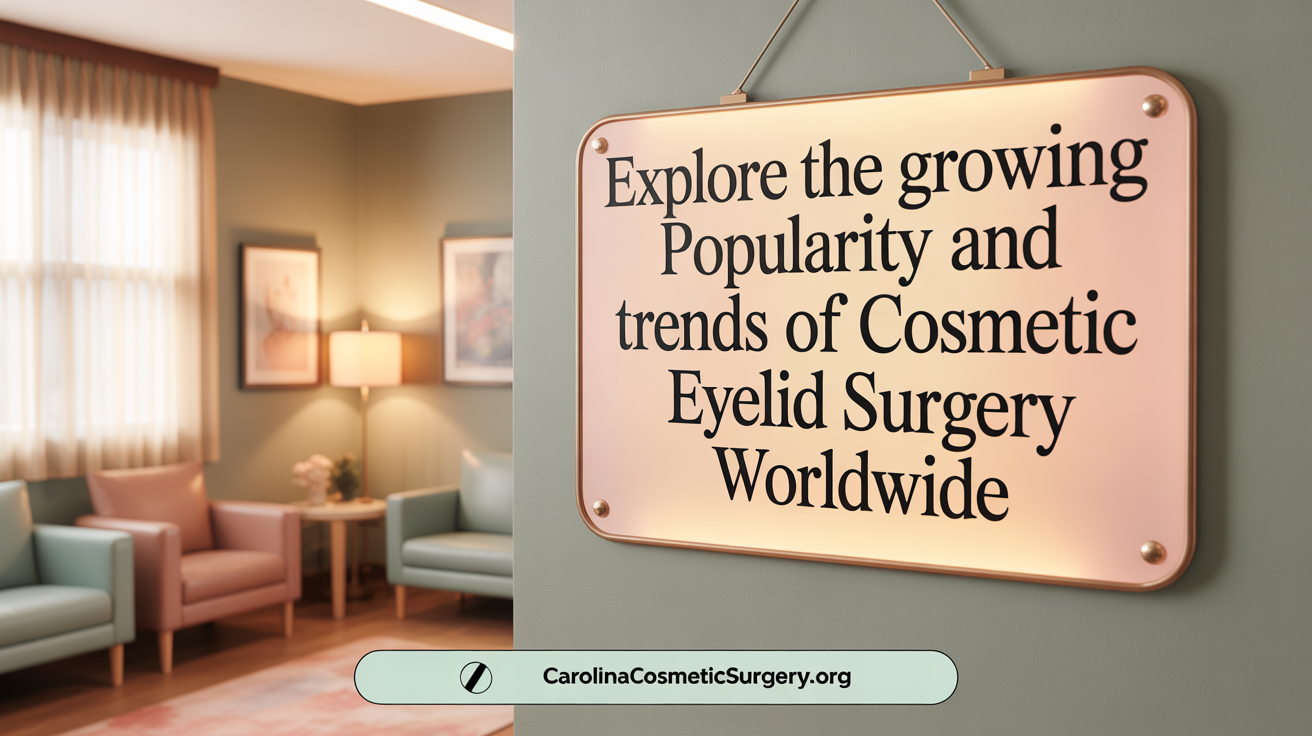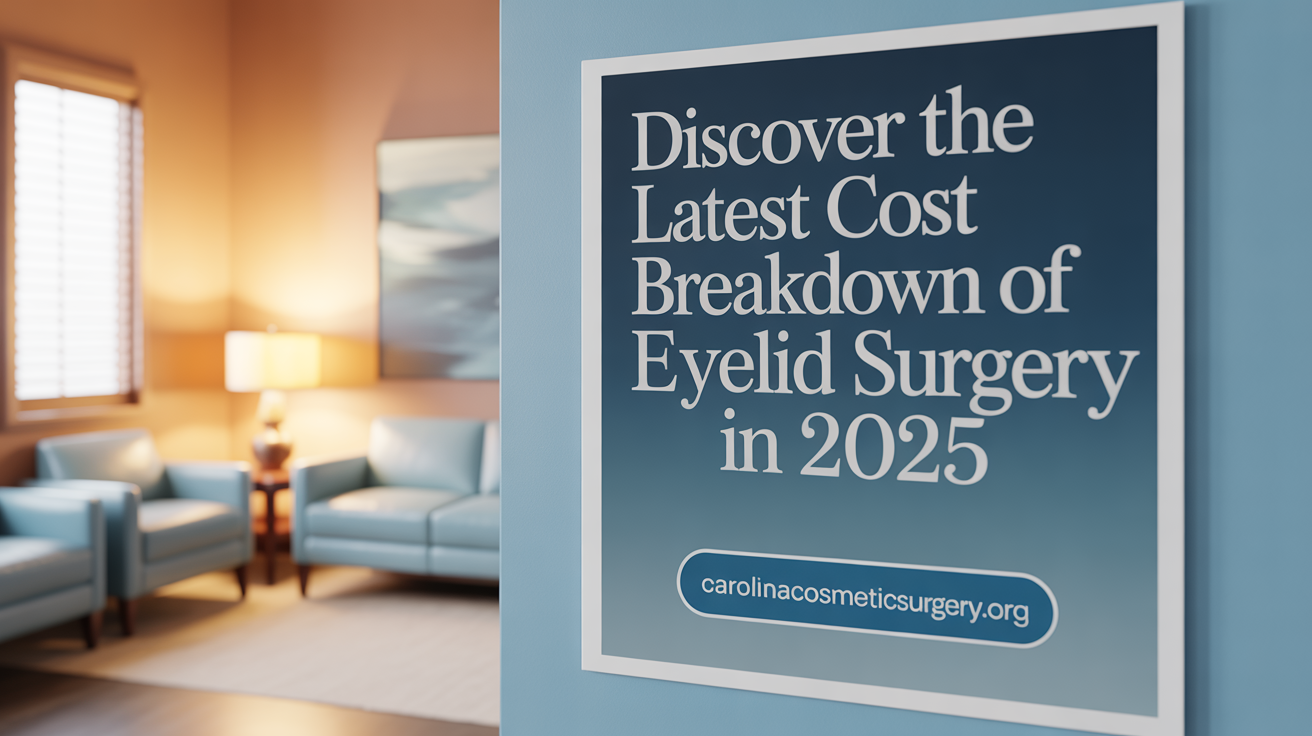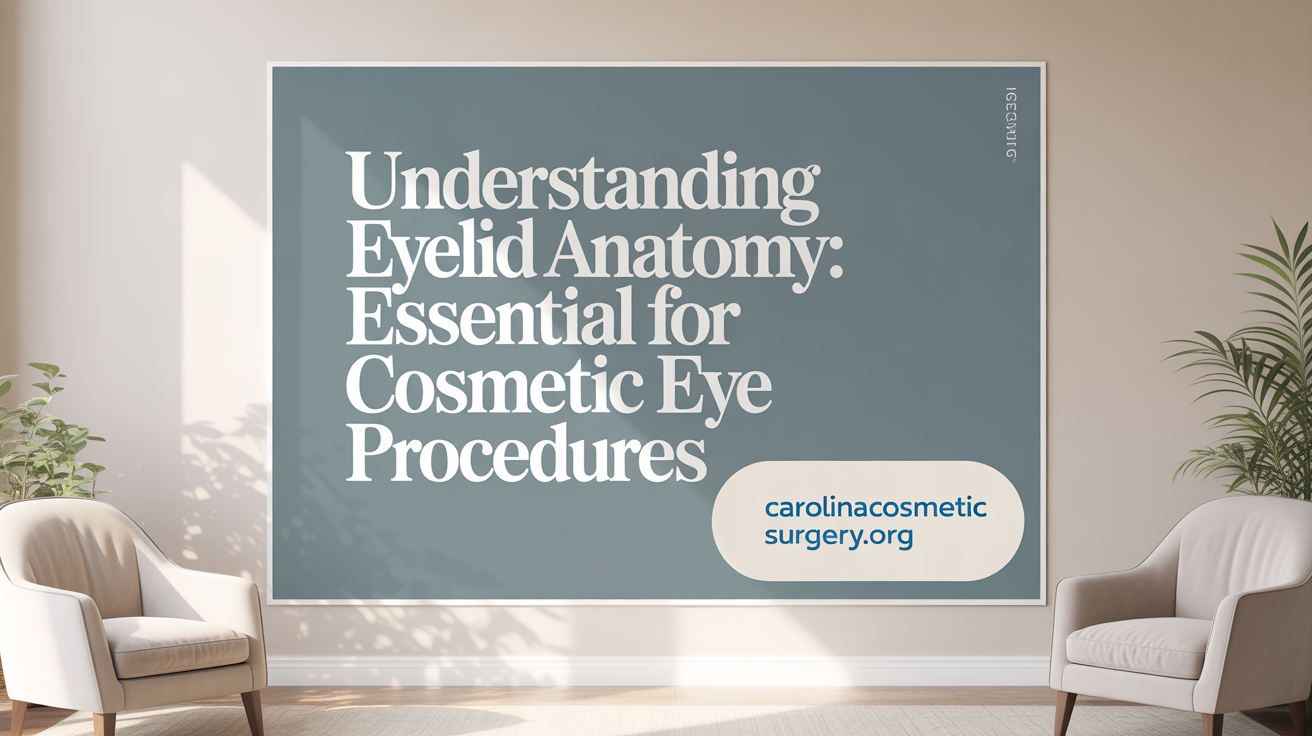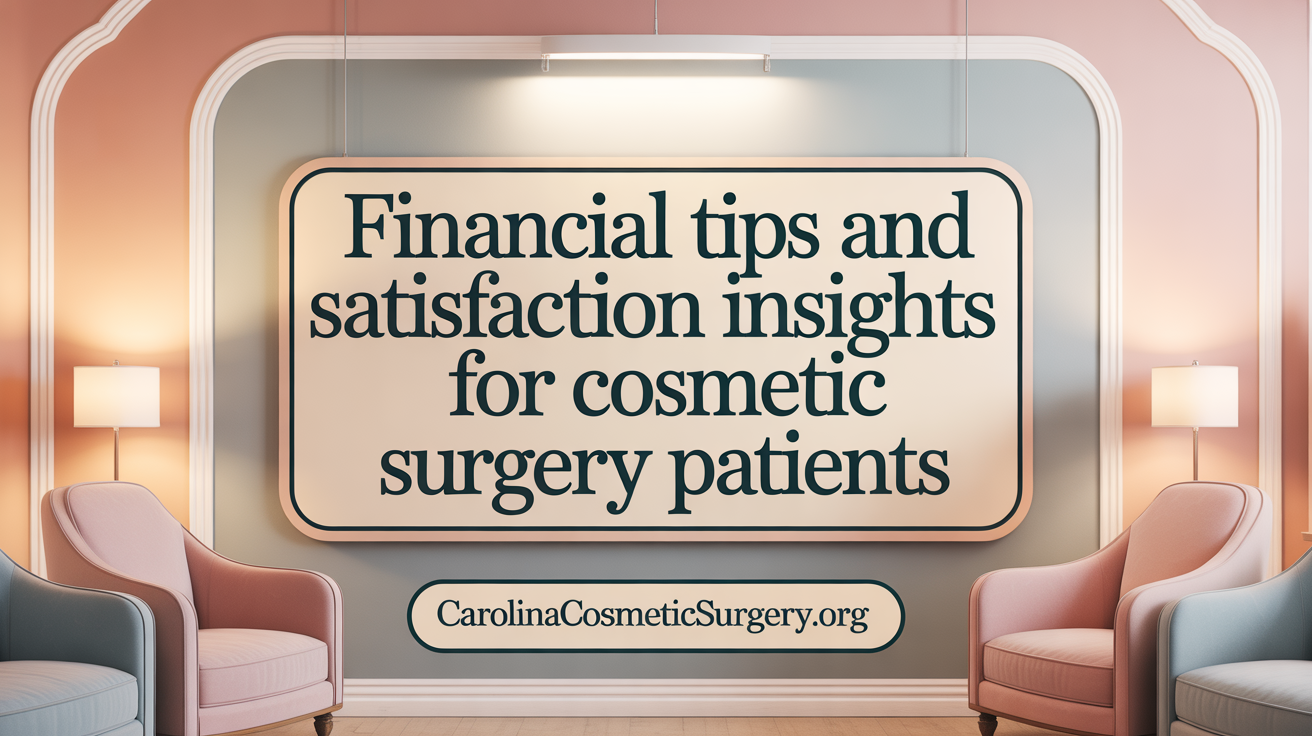Understanding Blepharoplasty in 2025
Blepharoplasty, commonly known as eyelid surgery, remains one of the leading cosmetic procedures worldwide. With rising patient demand and evolving surgical techniques, understanding the safety profile and cost structures in 2025 is essential for prospective patients and practitioners alike. This article offers a detailed examination of the latest statistics, safety considerations, and financial factors involved in blepharoplasty, helping readers make informed decisions in 2025.
Global Plastic Surgery Landscape and Trends
What are the statistics and trends regarding plastic surgery worldwide?
In recent years, the global landscape of plastic surgery has seen remarkable growth. In 2022, around 54% more procedures were performed worldwide compared to previous years, totaling tens of millions of cosmetic and reconstructive operations. Specifically, the total number of procedures hit over 17 million in the United States alone, with similar upward trends in other regions.
The United States remains one of the leading countries with approximately 26.2 million procedures performed in 2022, reflecting a 19% increase since 2019. Brazil also shows strong growth, with the number of plastic surgeons rising from about 4,820 in 2013 to more than 7,830 in 2022, highlighting the increasing popularity of cosmetic procedures.
Globally, non-surgical procedures are rapidly growing, with a 44% increase noted in 2022. The overall market size for aesthetic implants alone is projected to double from USD 4.8 billion in 2022 to around USD 10 billion by 2032, growing at a compound annual growth rate (CAGR) of 7.8%. These figures indicate a sustained global interest in both surgical and non-surgical aesthetic enhancements.
Regional preferences and procedure popularity
Different countries and regions exhibit distinct preferences for cosmetic procedures. In the United States, popular surgeries include liposuction, breast augmentation, and Botox injections. Conversely, South Korea leads globally with one in 25 people undergoing plastic surgery, with rhinoplasty, blepharoplasty, and liposuction being particularly favored.
In Europe, Greeks prefer breast implants, Italians often choose Botox and liposuction, while Brazilians frequently opt for breast implants, liposuction, and Botox. These trends reflect cultural beauty standards and the availability of specialized procedures in each region.
Trends driving cosmetic surgery interest globally
Recent post-pandemic shifts have influenced the rise in facial and neck procedures, including eyelid surgeries. Increased social awareness and the desire to maintain a youthful appearance contribute to the growing popularity.
Medical advances and safety standards have also played an essential role, with reputable surgeons emphasizing high safety standards and patient education. As a result, satisfaction rates remain high, with around 97% of breast augmentation patients reporting satisfaction.
The evolving market, supported by technological improvements and expanding procedures like blepharoplasty, continues to attract global interest. Affordability and financing options further facilitate access, making cosmetic surgery an increasingly common choice worldwide.
| Region | Top Procedures | Notable Trends | Source Insights |
|---|---|---|---|
| United States | Liposuction, Breast Implants, Botox | Growing popularity, high satisfaction rates | 19% increase since 2019, 26.2 million procedures |
| South Korea | Rhinoplasty, Blepharoplasty, Liposuction | Highest per capita surgery rate | Leading in facial procedures |
| Brazil | Breast Implants, Liposuction, Botox | Rapid increase in surgeons and procedures | Over 7,830 surgeons in 2022 |
| Europe | Breast Implants, Botox, Liposuction | Region-specific preferences | Cultural influences |
As assessments increase and technological advancements continue, the global demand for aesthetic procedures, including eyelid surgeries like blepharoplasty, is projected to grow significantly by 2025 and beyond, emphasizing its prominence in the worldwide plastic surgery scene.
Annual Volume of Plastic Surgery Procedures Globally
How many people undergo plastic surgery procedures each year globally?
While exact numbers for 2024 are not explicitly available, industry reports suggest that millions of procedures are performed worldwide annually. The global cosmetic surgery market is experiencing rapid growth, driven by advancements in technology, changing societal attitudes toward beauty, and greater accessibility.
North America, particularly the United States, accounts for more than 30% of the global market share, showcasing its significant influence on industry trends. The high procedure volume in this region is supported by a culture that increasingly values aesthetic enhancement and accessible financing options.
This upward trend includes both surgical procedures, such as eyelid surgery (blepharoplasty), breast augmentation, and liposuction, and non-surgical treatments like Botox and fillers. The continuous rise highlights a robust and expanding global market, with increasing acceptance across diverse populations.
Recent data indicates that in 2022 alone, over 17 million cosmetic procedures were performed in the United States and billions of procedures bore the mark of global demand.
The growth pattern reflects not only higher procedure numbers but also broader acceptance of aesthetic procedures, driven by influenced social behaviors.
| Region | Estimated Market Share | Key Factors |
|---|---|---|
| North America | >30% | Societal acceptance, technological advancements, financing options |
| Europe | Significant | Innovation in minimally invasive methods |
| Asia-Pacific | Growing rapidly | Expanding middle class, cultural shifts |
| Rest of World | Increasing | Accessibility, globalization of beauty standards |
Overall, the industry’s trajectory indicates that the global volume of plastic surgery procedures will continue to rise, promoted by both technological innovations and evolving beauty standards.
Current Trends and Popularity of Blepharoplasty

Blepharoplasty ranking among cosmetic surgeries
In 2022, eyelid surgery, also known as blepharoplasty, was the fourth most popular cosmetic procedure in the United States. It is widely favored for its ability to rejuvenate the face, improve vision obstructed by sagging eyelid skin, and boost overall appearance. Globally, eyelid surgery ranks among the top plastic procedures alongside breast augmentation, liposuction, and rhinoplasty.
Post-pandemic influences
The post-pandemic period has seen a notable rise in facial and neck procedures, including eyelid surgeries. Social and behavioral factors, such as increased video conferencing and heightened awareness of facial aesthetics, have contributed to this trend. Many individuals seek refreshening treatments to counteract signs of aging and fatigue that have become more prominent during extended periods of mask-wearing and remote work.
Patient demographics and motivations
Patients choosing blepharoplasty are often healthy and motivated by both cosmetic and functional reasons. Common indications include excess skin and puffiness that create a tired look or interfere with vision. The typical patient is a non-smoker with realistic expectations who desires improved facial harmony. The procedure appeals to a wide age range, as both younger individuals with congenital or early signs of aging, and older adults seeking rejuvenation, form a significant portion of those undergoing eyelid surgery.
Overall, blepharoplasty remains highly sought after, driven by aesthetic desires and functional benefits, with a growing emphasis on safety, expertise, and advanced techniques. The continued upward trend indicates its crucial role in facial rejuvenation practices worldwide.
Comprehensive Cost Analysis of Blepharoplasty in 2025

What is the average cost of blepharoplasty procedures?
In 2025, the cost of eyelid surgery, or blepharoplasty, varies depending on the type of procedure. For upper eyelids, the average price ranges from $3,000 to $6,000. Lower eyelid procedures tend to be slightly more expensive, with costs between $5,000 and $8,000. When both upper and lower eyelids are addressed in a single operation, the total expense typically falls between $8,000 and $11,000.
What factors influence blepharoplasty pricing?
Several elements contribute to the variation in costs. Surgeons' expertise and reputation can significantly impact pricing, with highly experienced practitioners charging more. Geographic location is another factor; procedures in metropolitan areas or regions with higher living costs tend to cost more.
The extent of the surgery also affects the final price. More complex cases, such as those requiring additional correction or reconstruction, will usually incur higher fees. Anesthesia, facility fees, and post-operative care are additional costs that vary from one provider to another.
Are there additional expenses beyond the surgeon’s fee?
Yes, additional charges are common. Anesthesia services can cost from $1,500 to $4,500, depending on the anesthesia type and length of operation. Facility or operating room fees may run from $500 to over $2,000. Post-operative care, including medications, tests, and follow-up visits, generally adds $300 to $1,500.
Combining blepharoplasty with other facial procedures like facelifts increases total costs, often reaching $8,000 to $15,000 or more. This makes careful planning and consultation with a qualified surgeon essential.
What about insurance coverage?
Most health insurance plans do not cover cosmetic eyelid surgery unless it is performed to improve functional issues, such as obstructed vision due to excess skin. Coverage may be available if the procedure addresses medical concerns like ptosis or severe dermatochalasis.
Knowing the breakdown of costs and factors influencing prices helps patients make informed decisions about blepharoplasty. Consulting with experienced surgeons and understanding all potential expenses ensure smooth planning for this popular procedure.
Safety Profile and Common Complications of Blepharoplasty

Safety standards and surgeon qualifications
The safety of eyelid surgery, or blepharoplasty, depends heavily on following strict standards set by professional organizations like the American Society of Plastic Surgeons (ASPS). Surgeons performing these procedures are required to have specialized training and credentials, ensuring experienced handling of the delicate eyelid anatomy.
Typical post-operative complications and management
While blepharoplasty is generally safe, it can involve potential complications. Common issues include lagophthalmos (inability to fully close the eyelids), ectropion (outward rolling of the eyelid), dry eyes, and, rarely, retrobulbar hemorrhage (bleeding behind the eye). Most complications are manageable with prompt medical attention, such as medication, additional procedures, or observation. Proper pre-operative evaluation and post-operative care are essential to minimize risks.
Return to work and recovery timelines
Patients typically recover quickly following eyelid surgery. Most can resume work and regular activities within 7 to 10 days, depending on the extent of the procedure and individual healing. Swelling and bruising are common in the initial days but tend to improve significantly within a week. Adequate rest, following surgeon’s instructions, and avoiding strenuous activity help ensure smooth recovery.
Patient criteria for safe surgery
Candidates suited for blepharoplasty are usually healthy individuals bothered by excess eyelid skin or puffiness that affects appearance or vision. Ideal candidates are non-smokers with realistic expectations and no underlying health conditions that could impair healing. A thorough consultation with a qualified surgeon is necessary to assess individual risks and determine suitability.
Technical and Anatomical Considerations in Blepharoplasty

Basic eyelid anatomy relevant to surgery
Eyelid surgery, or blepharoplasty, relies heavily on understanding the complex anatomy of the eyelids. The eyelid lamellae are tissue layers that include skin, muscle, and connective tissues. Beneath the skin are fat compartments that can protrude with age or genetic predisposition. The tarsal plates provide structural support, while canthal tendons anchor the eyelids laterally to the orbit.
Types of blepharoplasty and indications
There are primarily two types of eyelid surgery: upper and lower blepharoplasty. Upper eyelid procedures mainly address dermatochalasis, which is excess skin that may impair vision or contribute to a tired appearance. Lower eyelid surgeries target fat herniation, or steatoblepharon, and skin excess. In some cases, both procedures are combined to achieve optimal aesthetic and functional results.
Functional and aesthetic benefits
The benefits of blepharoplasty extend beyond cosmetic enhancement. Many patients experience improved vision when excess eyelid skin obstructs their line of sight. Additionally, the procedure can rejuvenate the face by reducing puffiness and sagging, making individuals look more alert and youthful.
This surgical approach, with careful consideration of anatomical details, ensures both safety and effectiveness. Advances anticipated in 2025 continue to refine techniques, emphasizing minimal scarring, natural results, and the preservation of eyelid function.
Financial Planning and Patient Satisfaction in Blepharoplasty

What are the financing options and consultation fees?
The costs associated with eyelid surgery, or blepharoplasty, can vary widely depending on the complexity of the procedure and the geographic location of the clinic. For example, initial consultation fees typically range from $100 to $500. The actual surgical costs include surgeon fees, facility charges, anesthesia, and post-operative care. Surgeon fees alone might range from $2,000 to over $5,000, while facility expenses can add an additional $500 to $2,000 or more. Additional costs such as anesthesia and pre- and post-operative care can amount to $1,500 to $4,500 and $300 to $1,500 respectively.
Many clinics offer financing options and payment plans to help patients manage these expenses more comfortably. It's advisable for prospective patients to discuss these options during consultation to understand the total expected cost and available financial arrangements.
What are patient satisfaction rates and outcome expectations?
Patient satisfaction with blepharoplasty remains high; in the United States, over 97% of those who underwent breast augmentation report satisfaction, a reflection of generally positive outcomes for comparable cosmetic procedures. Expectations should be realistic, with most patients experiencing improvements in both appearance and, when applicable, functional vision.
Patients typically see results within a week to ten days, with a full recovery taking several weeks depending on the extent of the surgery. Post-surgical complications are rare but can include dry eyes, lagophthalmos, or ectropion, which are usually manageable with prompt medical attention.
Are there trends toward combined cosmetic procedures?
Increasing interest in facial rejuvenation has driven a rise in combined procedures, including blepharoplasty paired with facelifts, brow lifts, or eyelid correction for both aesthetic and functional needs. Combining these procedures not only addresses multiple concerns simultaneously but also tends to be more cost-effective, with total costs ranging from $8,000 to over $15,000.
This trend reflects a broader preference for efficient cosmetic enhancements that deliver comprehensive results. Patients should consult experienced surgeons to determine the best approach tailored to their facial structure and personal goals.
| Aspect | Typical Cost Range | Additional Notes |
|---|---|---|
| Consultation | $100 - $500 | Initial advice and assessment |
| Surgeon’s fee | $2,000 - $5,000+ | Depends on complexity and location |
| Facility fee | $500 - $2,000+ | Varies by clinic amenities |
| Anesthesia & Operating Room | $1,500 - $4,500 | Includes anesthesia and facility use |
| Post-operative care | $300 - $1,500 | Follow-up tests, medications |
| Combined procedures | $8,000 - $15,000+ | Multiple surgeries bundled |
Understanding these aspects can assist candidates in planning their blepharoplasty journey effectively while ensuring high satisfaction levels post-procedure.
Evaluating Blepharoplasty in 2025: Safety and Cost Perspectives
As blepharoplasty continues to be a highly sought cosmetic procedure in 2025, understanding its comprehensive safety data and cost structures is crucial. Advances in surgical techniques, stringent safety protocols, and rising procedure volumes reflect an evolving industry focused on patient well-being and satisfaction. Although costs vary based on factors such as surgeon expertise and geographic location, detailed financial planning and awareness of potential complications ensure that patients can make confident decisions. Ultimately, blepharoplasty offers both functional and aesthetic benefits, maintaining its role as a key procedure within the global plastic surgery landscape.
References
- U.S. Plastic Surgery Trends 2025 - The Most Sought-After Procedures
- Plastic Surgery Statistics and Facts (2025) - Market.us Media
- Eyelid Surgery Cost - American Society of Plastic Surgeons
- Blepharoplasty Cost: A Comprehensive Guide
- Blepharoplasty - StatPearls - NCBI Bookshelf
- How Much Does Blepharoplasty Cost in 2025? | South Bay & Torrance
- Blepharoplasty (Eyelid correction) in Republic of Korea - Bookimed
- Plastic Surgery by Country 2025 - World Population Review
